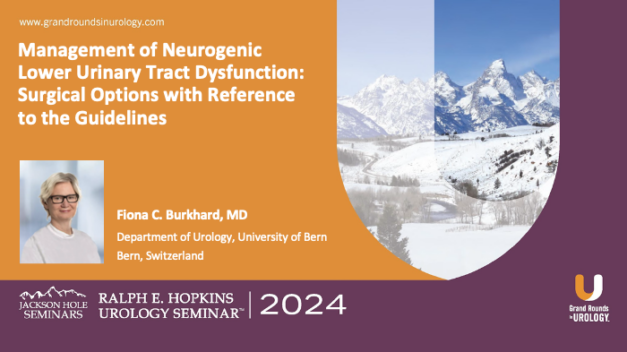Management of Neurogenic Lower Urinary Tract Dysfunction: Surgical Options with Reference to the Guidelines
Fiona C. Burkhard, MD, discusses the surgical management of neurogenic lower urinary tract dysfunction (NLUTD). Dr. Burkhard begins with an overview of the prevalence of NLUTD, its patterns related to spinal cord injury (SCI), and treatment goals. She summarizes guidelines from the European Association of Urology (EAU), the American Urological Association (AUA) and the Society of Urodynamics, Female Pelvic Medicine & Urogenital Reconstruction (SUFU) regarding the surgical management of NLUTD.
Dr. Burkhard then describes clam ileocystoplasty, and shares data on the procedures’ success in stabilizing renal function and preventing anatomical deterioration. She cautions that lifelong follow-up is essential. Dr. Burkhard shares quality-of-life (QoL) data showing improvement after augmentation.
She addresses additional EAU, AUA, and SUFU guidelines on urinary diversion, before highlighting data on sex differences in bladder management, symptoms, and satisfaction after SCI. Dr. Burkhard addresses reflux prevention, bladder outlet, and catheterization issues.
Dr. Burkhard summarizes her lecture by emphasizing that, while variations exist in the grading of recommendations, overall recommendations for treatment are similar across guidelines. She reiterates the importance of the patient’s perspective and lifelong follow-up in highlighting the advantages of surgical management.
Read More




